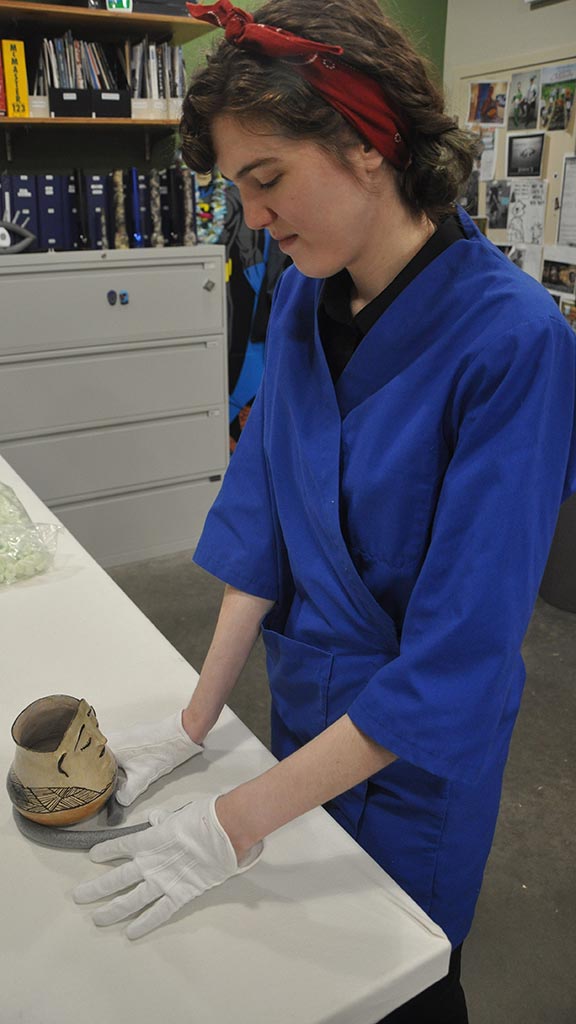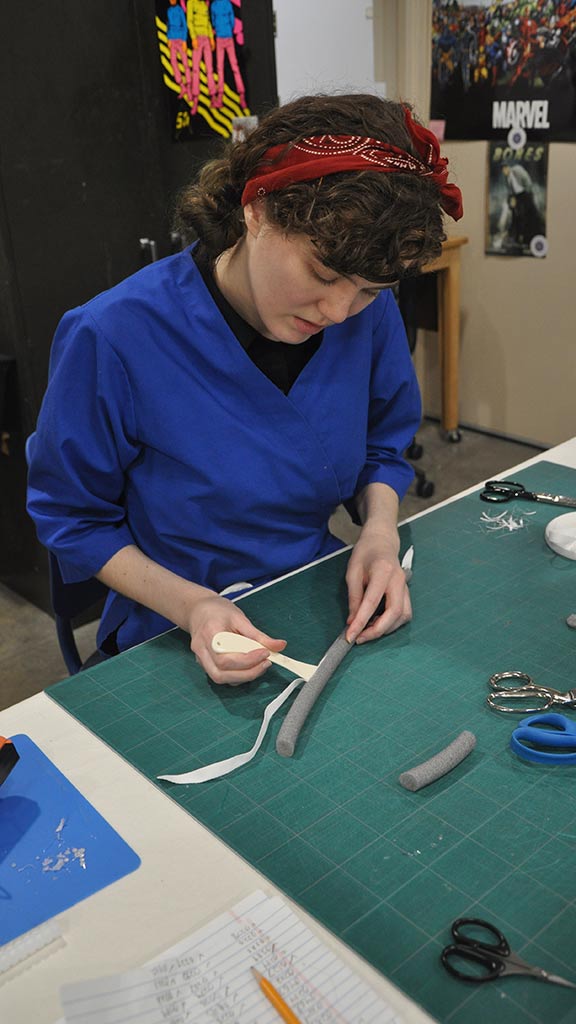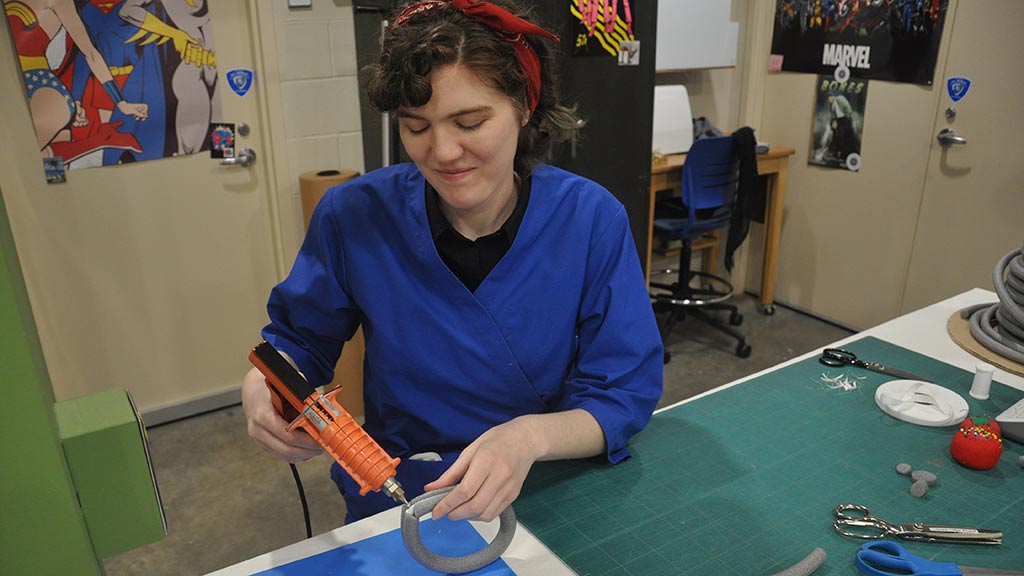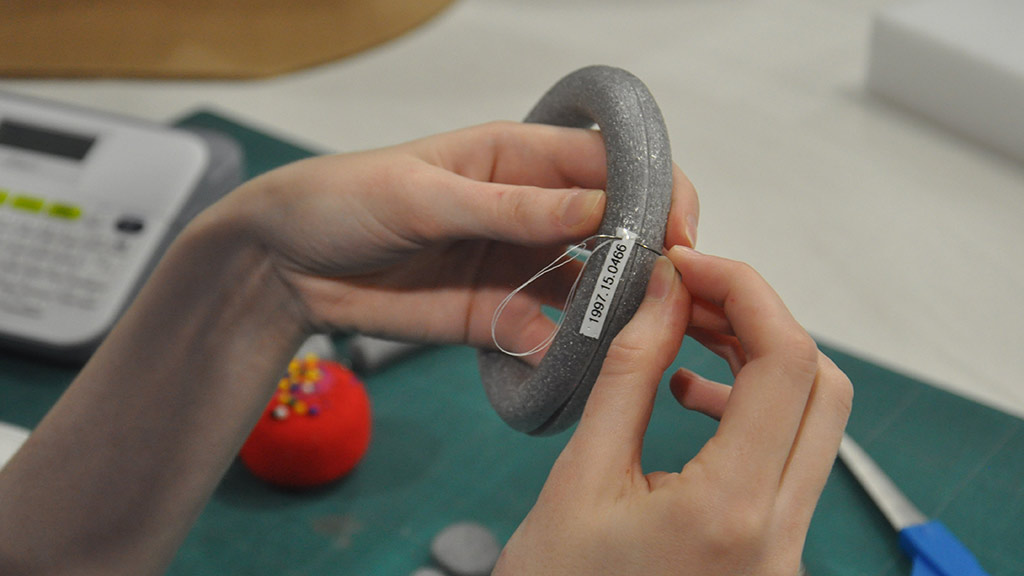
Canelos Quichua Pottery Ring Mounts
- Post Date: 4/6/2019
- Author: John Holton
- Reading Time: 2 minute read
Spurlock Museum has a remarkable collection of Canelos Quichua pottery from Ecuador. These ceramic vessels are often very thin and molded into complex anatomical shapes. Because of the unique features of these designs, specialized long-term artifact supports are needed. To improve upon our storage situation for this nearly 600-piece collection, the Collections team have begun creating custom-sized foam ring mounts to help prevent the round-bottomed vessels from rocking while being stored on movable shelving units.
-
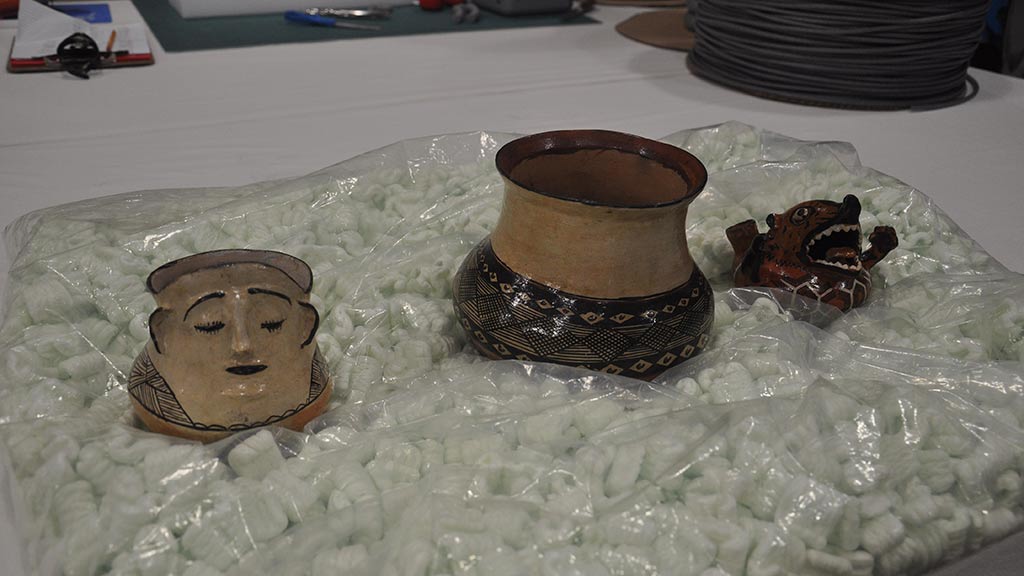 Many of the vessels are currently stored on bolsters filled with foam peanuts, as seen here. This storage method is not space-efficient: the bolsters take up significantly more space than the vessels themselves. Custom-sized ring mounts provide increased stability for the vessel while maximizing the efficiency of our storage space.
Many of the vessels are currently stored on bolsters filled with foam peanuts, as seen here. This storage method is not space-efficient: the bolsters take up significantly more space than the vessels themselves. Custom-sized ring mounts provide increased stability for the vessel while maximizing the efficiency of our storage space. -
 With the newly built custom-sized foam rings, the round-bottom vessels wont rock while being moved on a cart or stored on a mobile shelving unit. So far, Collections staff have completed nearly 250 ring mounts! This project supports the long-term preservation of this unique collection, while freeing valuable shelf space for our growing number of artifacts.
With the newly built custom-sized foam rings, the round-bottom vessels wont rock while being moved on a cart or stored on a mobile shelving unit. So far, Collections staff have completed nearly 250 ring mounts! This project supports the long-term preservation of this unique collection, while freeing valuable shelf space for our growing number of artifacts.
If you’d like to learn more about these incredible pieces, or see some for yourself in person, come by our exhibit South America: "Commonalities in Diversity." We currently have over 50 examples on display.
-
- Share:
- Subscribe to Newletter
- Giving
